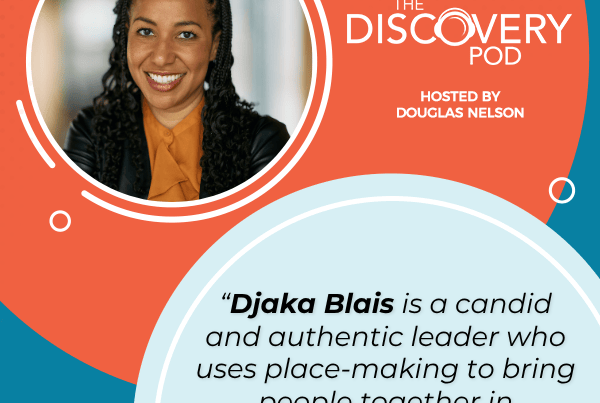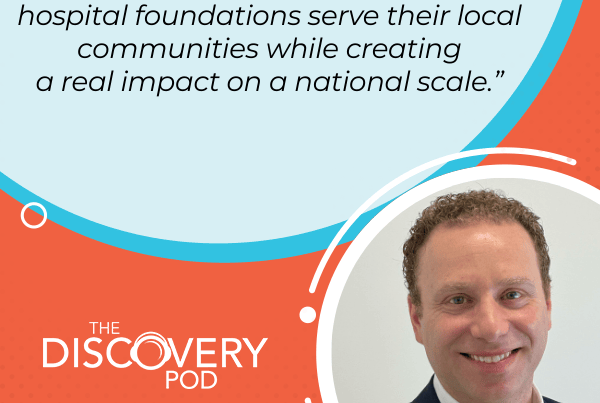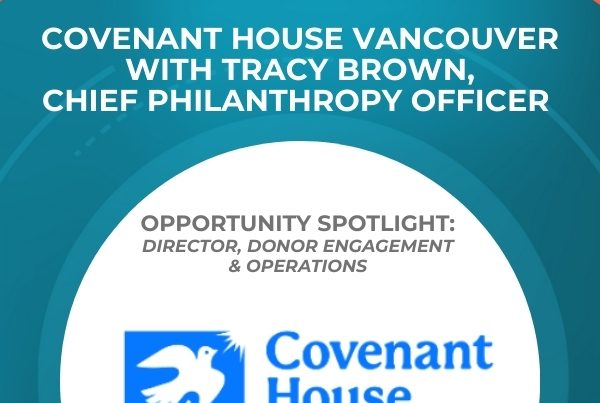Do you love skiing and look forward to competing in this sport? Then immerse yourself in an organization with a culture of excellence. Freestyle BC offers freestyle skiing programs in British Columbia, focusing on delivering ski programs that enable the athlete to succeed at the highest level of competition. In today’s episode, Josh Dueck, an aspiring professional skier and coach, shares his ordeals of being a professional skier and his path to becoming a coach. He also shares his insights on how his concept, “Safe Sports, Safe Athlete,” plays out for sports worldwide over the next couple of years. We’re changing culture and how people act and operate across the board regarding coaching and mentoring to protect these athletes with programs that value their physical and mental well-being. Tune in to The Discovery Pod to hear more from this inspirational episode.
—
Listen to the podcast here
Freestyle BC With Josh Dueck
Our guest is Josh Dueck. He’s the Executive Director of the Freestyle BC Ski Association. He is a Paralympic champion, a world champion, and X Games champion. An inspiring story of an athlete overcoming becoming a coach and leading an association. His reflections on his time as an athlete, time as a coach, and what it has meant for his leadership journey in our social profit sector is something you won’t want to miss. Here’s my conversation with Josh Dueck.
—
Josh, welcome to the show.
Thanks for having me. It’s good to be here.
We are going to start with you like we have all of our guests this season, which is asking an important question. What was your first memory of giving back or community service that you can recall?
I’m going to go with coaching. I was and have been involved in the freestyle ski community for many years. I started like many as an athlete. At some point in time, I felt like it was important to give back in some way, shape or form. Coaching was the first modality to do that. It was volunteer coaching some of the younger kids and mentoring them as they were making their way up the ranks and giving them something similar to the experience that I had, which was community and belonging.
I’m sure it was inspiring for you to receive coaching. What did it feel like when you were on the other side of the desk? It’s not a desk when you were doing ski coaching.
The other side of the jump, per se. It was empowering. My life has been dedicated to outdoor living and sports. I thought that was the best that life could be, being an athlete, living in that environment, and learning new skills. It was a bit of a default that got me into coaching. I didn’t necessarily have the skills at the right time, and I certainly didn’t have the finances to carry on with my career. I got into coaching as a byproduct of I still want to be involved in the sector and sport. I got into coaching and found that to be a lot more meaningful and purposeful. I was able to share my love of the sport in a productive way with this next generation of skiers.
You have an incredible story that many of our audience members may have heard a little bit about or maybe not heard of. Can you share a little bit of your life’s journey that brought you to being the Executive Director at Freestyle BC Ski Association?
I think of myself as a professional ski bum or at least I did when I was in my younger years. I started skiing as a teenager, 14 or 15 years old. I got involved in the sport and freestyle skiing shortly thereafter. I made my best effort to make the provincial ski team, which I did. I was in that program for a couple of years in hopes to make the national team. That’s definitely where my career stopped. I didn’t quite have what it took to make the national program at that point in time. I got into coaching. In my second year of being a full-time professional coach, I was young, cocky, and probably a bit arrogant and put myself in a dangerous situation.
That resulted in a dislocation of my back, which left me paralyzed from the waist down. Harder than the injury itself was the impact that I had on the community of skiers and athletes that I was working with. There was a lot of guilt and shame. Looking at the kids, some of them were affected by that and maybe left the sport because of what they had witnessed or what they were seeing unfold in front of them. That was hard. I did my best to move forward like when you fall off the horse, get back on a scenario. Also, continue to live my passion, which was to be in the mountains and be a skier.
The timing was on my side at this point in time. At the age of 23, which is when I had my injury, that was in 2004, and shortly thereafter, Vancouver was awarded the 2010 Olympic and Paralympic bid. I was able to quite quickly repurpose myself. I moved from the sport of freestyle skiing into Alpine ski racing and made a campaign towards those games. I competed for Canada in 2010 and as well in Sochi 2014, which was an incredible experience to have both games experience and be successful in different ways at both games and promoting the sport, and also, personally, in terms of hitting the podium in both sets of games.
Shortly thereafter, I retired and started a family, which was exciting. My journey as an athlete was starting to taper off, obviously. The board of directors for freestyle ski had looked at me as a good potential candidate to apply for the executive director role based upon my experience as a coach, as an athlete, and my general persona, which they thought would be a good fit for the association. That was in 2018. For me, it seemed like a nice fit because I went from athlete to coach to athlete, and here was a neat opportunity to contribute to sport in a whole different way as an administrator.
A soft touch on this story because I know there are a lot of ups and downs as you go through that journey. Where did Ellen DeGeneres fit into that story?
That was in 2012. Alpine ski racing was something I enjoyed doing but freestyle skiing is where my passion is deeply rooted. The whole time while I was competing for Team Canada on the race circuit, I still continued to dabble in film, photography, and backcountry skiing, which resulted in The Freedom Chair as a small documentary that was produced and ended up being an award-winning documentary around the world and lot of mountain film festivals. That spawned the conversation of, “Could we do a back flip on a sit ski?” We then evolved.
That is not an obvious connection.
It was something that I thought was possible. I wanted to explore the crossover between my background in freestyle and my journey as a Paralympic athlete. We were able to achieve that goal. It was highly successful. It went viral before viral was even a thing in 2012, which caught the attention of Ellen. She called me onto the show, which then catapulted me into this whole new stratosphere of awareness around the Paralympic sport and my story. It was incredible to see what came of that and the number of lives that were impacted through Ellen and through the backflip itself.
We saw that in your bio, and I was like, “We got to get that on the show. I want to hear that.” I don’t know many people who’ve met Ellen DeGeneres. What’s she like?
She’s wonderful. I am a champion of that. She was present, attentive, and caring during the time that I had with her on the show. I do believe that through her own hardship and struggle, she’s developed a deep empathy and desire to make a positive impact through her life and story more happily, I suppose, through the life and story of all the people that she’s had on her show.
Not many people can claim to be a Paralympic champion, a world champion, and an X Games champion. How did those experiences at the top of the podium or being on the podium shape you as the leader and prepare you for the position that you hold now?
You learn to control the things that are within your variable and let go of those that are not within your control. In sports, especially in administration, there are a lot of things that I want to effect change on but are out of reach or out of my control. You must learn to let those aspects be and let them rest rather than stress or try to wrestle them to submission. In my daily job, I look at what I can affect positively throughout the day.
I put my energy there. There are other things that I may have to shelf for the time being and observe for a moment and things that maybe are completely out of my control. I pass that on to the board of directors. I’m like, “Here are some things that are coming up that I don’t know how to deal with.” You get good at not taking those things personally. It’s like, “Here’s what I can do, what I can focus on a little bit, and what’s completely out of my range. How can I ask for help and support?”
An athlete isn’t an island to themselves. They’ve got huge amounts of support network, whether it’s a physio, a doctor, a nutritionist, your coaches or whatnot. I put that akin to my board of directors. I’ve got this great support team that’s with me that’s empowering me and also creating reference points to things that may be a blind spot. The board does the same.
I’m curious. As the athlete, the focus is on you. The nutritionist and the physiotherapists are trying to make the athlete or supporting the athlete to be the best that they can be. When you are leading an organization, it’s often the uplifting of all of the people around you, and then the focus is on them. How did you find that transition as you had the experience as a coach and an athlete twice? When you became the leader of the organization, was it a natural transition for you?
No, I don’t think so. You bring up a good point. The athlete, by nature, is served by many people. Now I have become a servant to many other people, which is slightly different, for sure. It’s paradoxically different. It’s the polar opposite. However, the outcome as an athlete, it’s Josh Dueck, the champion, and the role of an executive director as the association grows, then that’s the win for me. Whether that growth is metrics, we have more participants involved, we create a safer space for the athletes to be engaged in, or we empower the coaches in a slightly different way. Those, for me, are the wins, even though they are never directly reflected upon me.
To be honest, I’m an introvert. The life of an athlete that had to be a celebrity was a task. I always went to the model of I would rather be under the radar than under the microscope. As the Director, if things go wrong, they fall onto my plate. I feel that. When they go right, that’s the success of my team and the leadership of the board, and so forth. It’s nice. I get to hide behind the office and support from afar.
It is such an interesting thing that when we talk to leaders across the entire social profit sector, the ones that have longevity and that are successful are the ones that, what you described, reflect the credit and accept the difficult points and the difficult times. It’s their responsibility. Does being an athlete and understanding the ups and downs of being an athlete? Even your unique personal story inform your ability to let others take credit and hold accountability for those things that maybe don’t go quite right.
Yeah. If I look back at my athletic story, it’s hard to reflect upon my wins but it’s easy to pull apart your losses. As a Director, it’s easy to be able to pass on the credit when we are successful but it’s natural for me to want to improve on areas that did not go so well. Maybe that’s a pretty direct correlation.
It's tough to reflect upon your wins, but it's really easy to pull apart your losses. As a director, it's effortless to be able to pass on the credit when we're successful, but it's very natural to want to improve on areas that did not go so well. Share on XAs an athlete and a coach, you’ve got a community around you that’s supporting the work that you do. One of the things we often hear from leaders in the sector is that it’s lonely at the top. There aren’t a lot of people to talk to when things don’t go quite right. Who do you turn to for advice in your role as the Executive Director there?
I’m fortunate to have a board of directors that is primarily alumni from our sports. They understand it as well, if not better than I do. It’s easy to lean into them when times get tough. I feel exceptionally fortunate in that sense that I can lean into not just the board but also the staff. There’s a strong sense of community and belonging that brought us all into this sector, specifically the sport of freestyle skiing.
There’s a loyalty and, let’s say, a dedication that I see from many people that were once athletes or coaches that we all, in different ways, feel a sense of duty to give back to the youth in the community because of the impact that it had on our lives. I can lean into a lot of people that know more than I do, especially when times get tough.
Is there a time or a moment you can think of where you asked either the board or member of the board or vice came back was not exactly the direction you were thinking of going, and you had to stop and think about that?
The board is for me, and specifically the leadership, so the chair, vice chair, and incoming chair meet once a week. Often, I feel like they are coaches to me. Sometimes when I ask for help, they abstain from direct help to allow me to problem-solve and figure it out on my own. They create maybe some safe parameters for me to develop as an individual rather than always calling out for a friend. There’s a certain empowerment that they’ve provided by not answering everything directly. Our ethos with Freestyle BC is motivation through mentorship. That happens right through to the top in terms of administration and board leadership.
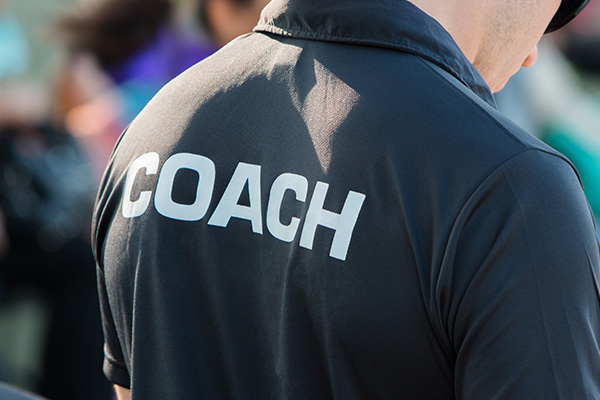
Freestyle BC: Coaches abstain from direct help to allow me to problem-solve and figure it out independently. So they create safe parameters for me to develop as an individual rather than always calling up for a friend.
That’s cool that you’ve got motivation through mentorship right through the organization. What’s your role as Executive Director when it comes to that mentorship?
When I started, there was a staff of 0.5, myself in the 0.5, and now we have a staff of 2.5, which is great. Being able to take that general model and provide that back to our high-performance director, sport development lead, and comms team, and now we have somebody in events, which is great. Providing them direction and some boundary within that direction, and then allowing them to be creative within it.
There’s not a lot of micromanagement from the board to me or from me to the staff and saying, “We’ve hired you based upon your qualifications. We think you can do an excellent job here. Here are the general parameters. Report back in a week and let us know how things are going and what support you need.” Being in awe of what they bring to the table, even if it varies from what the original thought process was in terms of what we needed to deliver to the membership.
That’s essential for an organization that is distributed as yours and is growing as quickly as your organization has grown. I want to pivot to that for a moment. COVID had a tremendous impact on the social sector, on all of us, and everyone. You can’t Zoom ski. What was the impact on athletes in your organization? How did you, as an organization, pivot to supporting the needs of the pandemic?
It was interesting to see how things unfolded over the last couple of years. There was obviously a great deal of uncertainty for everybody in the social impact sector. We were not exempt from that. What we learned quickly, though because we are an outdoor individual-based sport, we were able to keep operations running to some degree throughout the entire pandemic, which was wonderful. We were motivated simply by the fact that we wanted to create opportunities for the kids, for their physical and mental well-being, to be able to do some activity.
The default was that a lot of indoor-based sports contacts, wrestling, volleyball, basketball, and rugby, were forced to shut down or atrophy quite a bit. As a byproduct of that, we picked up a lot of participants or at least that’s our suspicion as we picked up a lot. We doubled over the pandemic, whereas most people struggled to maintain where they lost quite a bit of participation.
We followed Bonnie Henry and her recommendations through viaSport. They helped us broker what would be the best way for us to engage in play. We had to modify the conditions of how we coached and how we operated. We weren’t allowed to travel throughout the province. One of the things that we did outside of regular club training and a way to engage the athletes in a community format was to utilize social media and provide virtual event opportunities where kids could compete on their own at home in a venue within a certain range of the parameter, and then submit their little video edits.
We had a crew of celebrity judges adjudicate. That’s playful. If the venues are different, obviously, how can you figure out who’s the champion of the day if at all competing somewhat differently? We threw in creativity as one of the primary criteria for the athletes and created a strong sense of playfulness within the sport, which is key.
We want these kids to be having fun as well as developing different skills based on some of the benchmarks that we have. It did wonders. Now, we’ve got this great hybrid opportunity where we can still engage effectively through social media but now we are permitted to do things in-person and travel across the province. It has been exciting to see the growth and the way we have been able to support these kids throughout.
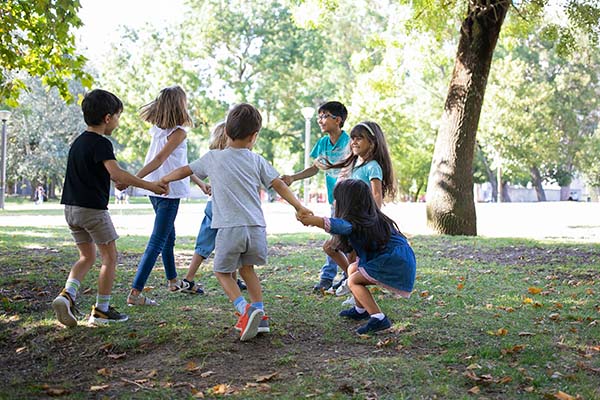
Freestyle BC: We want these kids to have fun and develop different skills based on some of our benchmarks.
Are you planning on doing both the creative zany online as well as the in-person, more structured events?
Yeah, we’ve definitely maintained the social presence where we are engaging them to share their best video edits and build up that atmosphere and the hype for the season. However, we are excited to go back to the in-person, more formalized venue for competition for these kids to challenge themselves to be their best.
You are in an enviable position in an organization that’s doubled over the course of the pandemic. We’ve heard from some leaders, hospital foundations, and CEOs whose donations went up as a result of the pandemic, one of the things they are challenged with, and I’m sure has crossed your plate or your mind, is because you’ve grown so much over the course of the pandemic, now that the pandemic is receding. What does success look like in the years going forward? Is it going back to a little bit more than you were before or is it holding onto all of those kids that now have the opportunity to go back to their indoor sports if they so choose?
It’s interesting. The grass might always seem greener on the other side. I don’t know how enviable it is. On one hand, we take a great deal of joy in knowing that we are able to provide refuge for a lot of kids for their physical and mental well-being. However, such a small part of our revenue is generated by participation fees. A lot of it comes from the government.
That has been the status quo. With all the money that the government’s invested to support the general public through the pandemic, that becomes quite unstable. What do we want to achieve? More opportunities to train coaches to keep up with the demand for our sport. We may have tripled our participation rate if we could have kept up with the demands of each particular club and each community but we weren’t able to train coaches at a level that we consider to be satisfactory fast enough.
Providing a more meaningful opportunity for coach development would be incredible. That’s something that we are prioritizing. If we could keep the participation rate status quo with the growth that we’ve had, that would be a wonderful achievement. Keeping kids interested in retaining them in our sport would be a huge plus. If we continue to grow, that’s great but sustainable growth is something that we think about. We would rather focus on quality over quantity. We talk about this at a board level like, “Do we want to continue to promote participation across the board or do we want to focus on quality programming?”
We are more on the latter side and providing the best possible product, even if that means a bit of atrophy. That said, the business model, in order to sustain, is growth. How do we do that in the best possible way? It has been a challenge and a strain on our staff at a PSO, Provincial Sport Organization level. It has been a massive struggle for a lot of our clubs throughout the regions in the provinces.
Is meeting demand and identifying and training new coaches the primary pressure?
It is across the board. No matter what sector you are in, finding good staff these days seems to be hard. I don’t know if anybody is resolved the riddle of why it’s hard to get good employees these days. When I was coming through the ranks of wanting to be a coach, it was in high demand. You had to work hard to qualify yourself to get a job. Now, it seems like any sector in the province is people are begging for people to show up and throw in a resume. We are in a sport where our job is to manage risks. We can’t take anybody to coach.
We need coaches that are qualified to understand acrobatics but as we move out of the pandemic, one of our, if not our, primary mandate is to keep kids safe and sport, both on the physical aspect. As we see across the sector, hockey, gymnastics, swimming, and bobsleigh have all hit the spotlight in terms of maltreatment of athletes. The number one priority we have with training our coaches and empowering our boards, not just at a PSO level but at our clubs, is to understand what’s expected from a board level and a hiring perspective on making sure that we have the best people in place to provide safe, meaningful programs for the kids in our community.
I know you spent a lot of time focusing on that at your organization and other organizations in British Columbia. You are also a member of the International Paralympic Committee. That safe-sports-safe-athlete concept that you are describing is a big topic around those board tables. How do you see that issue playing out for sports in general across the world over the next couple of years?
It’s a necessary change that will take time. I wonder about the timeframe that is being suggested at different levels, whether it’s at the international level, national level or provincial level, which is my primary concern. I feel like cultural change takes a great amount of time and might be 4 or 8 years to adjust the way we think and the way we operate.
Whereas it almost seems a bit like an acute measure like, “Let’s fix this now.” For sure, there need to be interventions that are made immediately. The checks and balances that need to be implemented immediately, accountability that needs to be in place, and the empowerment and education of the boards at a club level, board at our level, at a provincial association, and alignment with national bodies as well.
We are changing culture. We are changing the way people act and operate across the board when it comes to coaching and mentoring. As a young father, I want to make sure that my kids are going into programs that are safe for their physical and mental well-being. That takes time. Now, it seems like things are moving quickly, which again, in some ways, is good but in other ways, I would like to see more of a broader scope vision. Maybe that’s happening, and I’m not seeing it quite yet, but this is 4 or 8 years, in my opinion, to shift the way we think and operate.
We're changing culture. We're changing the way people act and operate across the board when it comes to coaching and mentoring. Share on XIt’s important conversations that are happening at the international, national, provincial, and local club levels. It is a lot of change going on. In some organizations like Hockey Canada, they are in the headlines, underlying the importance of getting this right and confronting it, particularly the most egregious issues. You are describing the cultural change around coaching and how coaching is done. Do I have that right?
There are certain checks and balances that we need to see like everybody needs to have a criminal record check, whether you are a volunteer or coach. You need to have to make ethical decisions. In our sport, concussions are a thing, so concussion safety and awareness. A safe sport as well. It’s a pretty robust curriculum that we expect all coaches to go through. With a significant surge and expectations, who’s governing that? Is that the national sporting body, the provincial or the club level? Making sure that all parties have a good understanding of how to ensure that the coaches have all of the certifications needed.
Again, the challenge of attracting good coaches. Now we have a lot more expectations of our coaches and a huge demand for that education. It’s like balancing that out. How do we support and empower our coaches to go through these courses and absorb and integrate what we are asking them to learn? From a board governance level, make sure that we oversee that in a good way and make sure that everybody does have that and is on board with it before they go into the field with the athletes. There’s one like, “Here’s what we need from you but then here’s also for the coaches to embrace this and not just take it as a course but as a shift in a way of thinking and a lifestyle.”
I can see that when you describe it that way, the timeline makes sense that it is a culture change. In an environment where you are facing scarcity and the number of coaches that you have, it’s another added challenge. As you were talking, I was thinking, “Josh does some pretty amazing things in the course of any given couple of months.” At the top of a run, you can be leading a board. You can be sitting or flying around the world as a part of your commitment to the International Paralympic Committee. How do you, as a leader, take stock of where you are at any given time? How do you make space for yourself as the leader of your organization?
Sometimes I take on a little bit more than I should. I wake up early every day to take time for myself. Silence and solitude are critical. 5:00 AM to 7:00 AM belongs to me. There might be some physical exercise. There might be some sitting and stillness to reflect. There’s a lot of writing and journaling that happens to process what’s happening the day before and what I want to achieve in the upcoming day. Having good counsel and good mentorship is key. Again, meeting with my board leadership once a week to review what’s happening with a general state of union update. They all play well into one another.
My role with the International Paralympic Committee, both the athlete council and the governing board, is a good opportunity for me to learn new things, meet new people, and see the sport from a slightly different perspective that I can adopt and then bring back down to a provincial sport level. On the one hand, I’m getting complimentary education that I bring back to the sector provincially.
It benefits the work that I do here and vice versa. I’m able to take some of the learnings that I have at the provincial level and report back to a higher level. They do merge quite nicely but it does become a bit taxing on my time because the European meetings happen from 3:00 in the morning until 6:00 in the morning, and then I bring back into the daily living over here.
They probably forget to leave nap time in your schedule when you’ve got that 3:00 AM to 6:00 AM meetings.
I miss napping. As an athlete, that was my job. I took such stock in that. As a parent and as somebody who volunteers and also has a paid job in the sports sector, napping is a scarce opportunity but when I can find the time, I will take fifteen minutes whenever I can.
That should probably be in the job posting for athletes. Not only do you get to do what you love and be singularly focused on performance but you also get to nap a lot. That would probably get more people into it.
The life of an athlete is all-consuming but it is the best consumption of time. I look back on that chapter of my life favorably. Maybe I knew at the time how great that chapter was but maybe not how great it was and look back on that. I suppose that’s what provides me the motivation and the energy to sustain the workload that I have now, is again, that sense of duty to give back to sport for what the sport has provided me.
As an able-bodied athlete, that sense of community and belonging, a place of safe refuge after my injury to be able to stay aligned with my values and a piece of my identity and do something that was outrageously fun but also a part of a bigger umbrella like being able to compete for Team Canada. I don’t use this word lightly and don’t like to use it all the time, but I have a great sense of pride to be Canadian.
One of the most profound experiences for me was watching from afar the opening ceremonies of the Vancouver 2010 Olympic Games. That was the precursor to the Paralympics a few weeks later. The way we told the story of our First Nations people, of some of our great Canadians like Terry Fox, having his folks be part of the culture and lighting ceremony, Wayne Gretzky is doing his piece of the puzzle, and Nancy Greene. It was wonderful to again see the diversity of our culture and feel a connection to who we are in such a diverse way was profoundly life-changing for me.
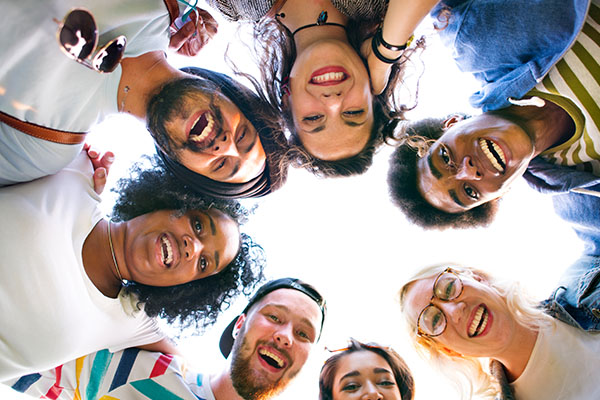
Freestyle BC: It was just so wonderful to see the diversity of our culture. To feel a connection to who we are in such a diverse way was profoundly life-changing.
Maybe that was the TSN turning point in my world where I feel fortunate to be an athlete, and when that chapter’s done, I need to and feel a sense of duty to give back in some way, shape or form. Working in the social impact sector is exhausting. It is never-ending. It’s demanding. Burnout is a hard reality for a lot of people. What’s given me staying powers, that sense of duty and service to give back to what shaped me to be the person that I am.
Josh, I appreciate you sharing that. That sense of pride is those Olympics are something that all of us who are watching, not those of us who are getting ready to compete in the Paralympic games or competing in the Olympic games but any Canadian watching that got that sense of pride. It’s great to hear what that meant to you and what that meant to your eventual performance. We are on the eve of another ski season. What are you looking forward to as the Executive Director of the Freestyle Ski Association?
In 2022, being involved with the Beijing Paralympic games is the Chef de Mission. That involved a lot of travel and demand on my time, which took away from my ability to be on the ground with the kids here in the local ski community. I’m most looking forward to being activated on the ground at the events with the kids and seeing the sport through their lens again because, in 2021, I was a little bit distracted with a few different things on the go. I was also managing the tail end of that pandemic.
With travel being more open, with sports being more accessible, I’m excited to go and ski alongside these kids and be with them on their journey and witness it firsthand. In 2021, I barely got on snow. In 2022, I intend to be on snow as much as possible, once a week, if I can, with the kids at the association but also with my own family. Enjoy the sport for what it is, and have fun. The last few years have been stressful and a lot of work. I’m looking forward to having fun.
As you talked about how difficult the last couple of years have been, you still had a big smile on your face throughout our whole conversation. I appreciate your perspective, the stories that you’ve shared, and the great advice that leaders can take from your story and your experience as Executive Director there. Thank you so much, Josh, for being on the show.
The pleasure has been mine. Thanks for the opportunity.
Important Links
About Josh Dueck
 In 2004, aspiring professional skier and coach, Josh Dueck was in a life-changing ski accident that left him paralyzed from the waist down. Life as he knew it no longer existed. From his hospital bed with the long months of recovery ahead, it was the initial encouragement from his Doctor that helped Josh re-dedicate his life to freedom; and the support of his now wife who completely dedicated herself to his recovery. Rather than wallow in misery, they chose to embrace the challenges he faced with an open heart and open mind. With the support of their family and ski community at large, their vision to return to the mountains became a series of (I’m)possible opportunities and life experiences. By 2009, Josh was the Para-Alpine World Champion; he won a silver medal in Vancouver in 2010 and followed that with a gold medal at the X Games in 2011.
In 2004, aspiring professional skier and coach, Josh Dueck was in a life-changing ski accident that left him paralyzed from the waist down. Life as he knew it no longer existed. From his hospital bed with the long months of recovery ahead, it was the initial encouragement from his Doctor that helped Josh re-dedicate his life to freedom; and the support of his now wife who completely dedicated herself to his recovery. Rather than wallow in misery, they chose to embrace the challenges he faced with an open heart and open mind. With the support of their family and ski community at large, their vision to return to the mountains became a series of (I’m)possible opportunities and life experiences. By 2009, Josh was the Para-Alpine World Champion; he won a silver medal in Vancouver in 2010 and followed that with a gold medal at the X Games in 2011.
Then, came the backflip. After a year of planning and progression, Josh, his close friends and a film crew, lead by legendary industry director Mike Douglas, ventured into the Whistler backcountry to build a jump that would help land the first backflip on a sit-ski. On a perfect bluebird day in February 2012, Josh hit the jump, soared upside down and landed in the soft snow below. It also landed Josh on the Ellen Degeneres Show. In Sochi 2014, Josh’s story continued to inspire. On the 10th anniversary of his accident, he won a Paralympic silver medal for Canada.
Days later, he won gold in the Super Combined to become Paralympic Champion and Canada’s Flag Bearer. Like the backflip, his story has come full circle since his retirement from the competitive world, Josh has dedicated his time to raising his family and furthering opportunities for other like-minded athletes. Josh leads the British Columbia Freestyle Ski Association, a way for him to give back to the sport that gave him so much. Josh has also been appointed the Chef de Mission for the Canadian Paralympic Team, for the 2022 Paralympic Games in Beijing. Josh and his wife Lacey also support a variety of non-profit organizations; such as Spinal Cord Injury BC, High Fives Foundation, Live it LOVE it Foundation and others with their unique model of empowerment through adventure and healing through community.

